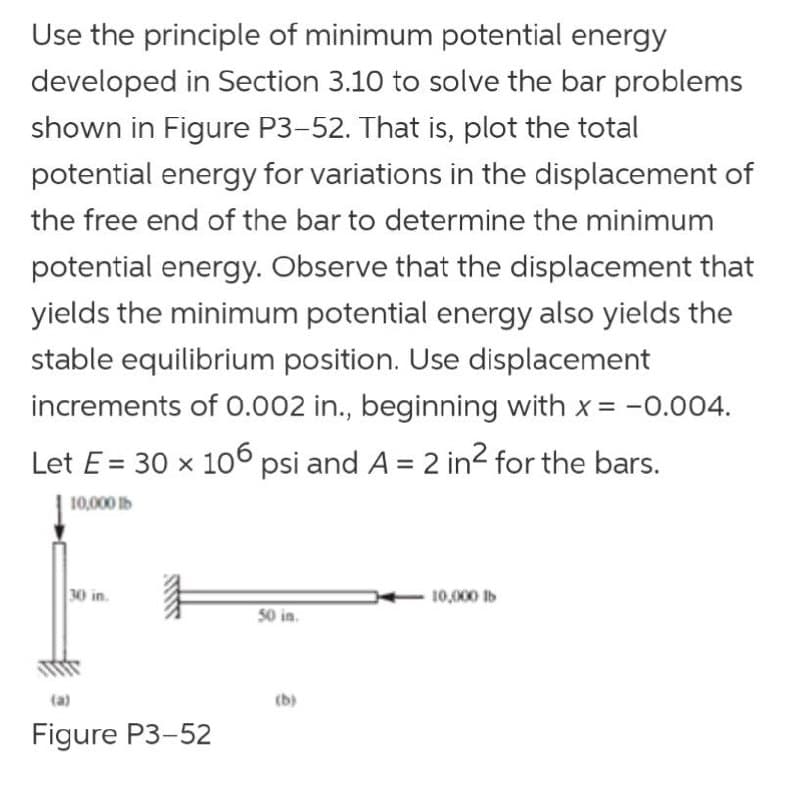Use the principle of minimum potential energy developed in Section 3.10 to solve the bar problems shown in Figure P3-52. That is, plot the total potential energy for variations in the displacement of the free end of the bar to determine the minimum potential energy. Observe that the displacement that yields the minimum potential energy also yields the stable equilibrium position. Use displacement increments of 0.002 in., beginning with x -0.004. Let E = 30 x 10° psi and A = 2 in2 for the bars.
Use the principle of minimum potential energy developed in Section 3.10 to solve the bar problems shown in Figure P3-52. That is, plot the total potential energy for variations in the displacement of the free end of the bar to determine the minimum potential energy. Observe that the displacement that yields the minimum potential energy also yields the stable equilibrium position. Use displacement increments of 0.002 in., beginning with x -0.004. Let E = 30 x 10° psi and A = 2 in2 for the bars.
Related questions
Question

Transcribed Image Text:Use the principle of minimum potential energy
developed in Section 3.10 to solve the bar problems
shown in Figure P3-52. That is, plot the total
potential energy for variations in the displacement of
the free end of the bar to determine the minimum
potential energy. Observe that the displacement that
yields the minimum potential energy also yields the
stable equilibrium position. Use displacement
increments of O.002 in., beginning with x = -0.004.
Let E = 30 x 106 psi and A = 2 in2 for the bars.
10,000 Ib
30 in.
10,000 lb
50 in.
(b)
Figure P3-52
Expert Solution
This question has been solved!
Explore an expertly crafted, step-by-step solution for a thorough understanding of key concepts.
This is a popular solution!
Trending now
This is a popular solution!
Step by step
Solved in 4 steps with 4 images
